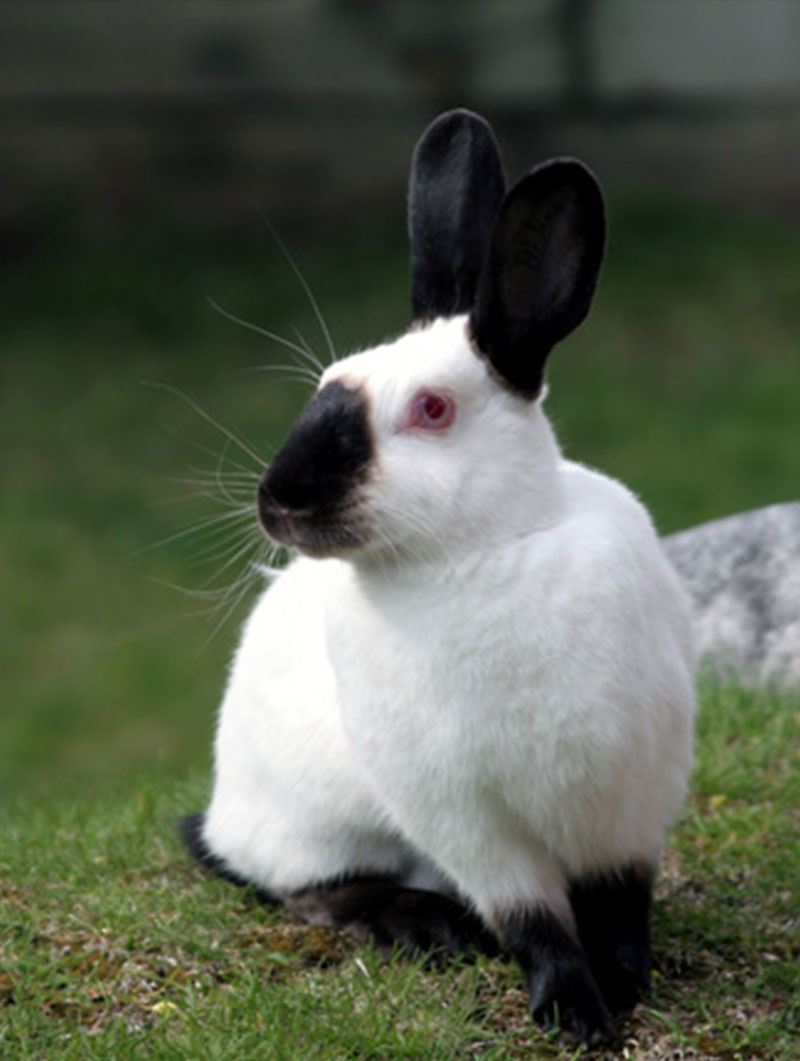Himalayan Rabbit
Oryctolagus cuniculus
Description:
Himalayan rabbits are small domestic rabbits that are long and lean in shape. Their bodies are white in color and are accented with darker-colored ears, noses, tails, and feet. Himalayans have red eyes and ears that stand up.
Size:
Adult Himalayan rabbits weigh 3-4 pounds (1.4-1.8 kg).
Adaptations:
As prey animals, rabbits have many adaptations that help them to survive.
- Their large ears swivel in all directions to pick up any sound.
- Rabbits’ strong back legs give them the speed necessary to flee from predators.
- Their feet contain long claws for traction and have fur on the bottom for warmth.
- Rabbits’ eyes are positioned on the sides of their heads so they can see danger approaching from any direction.
Diet:
Clover’s diet consists of commercial rabbit pellets, hay, fruits, and vegetables.
Reproduction:
When a rabbit is pregnant it is said to be “in kindle.” The gestation period lasts 31 days. The female (doe) gives birth to a litter of baby rabbits (kits or kittens), which are totally blind and hairless until they are 10 days of age. The typical litter size is six or seven young but can be as high as 12. The young rabbits are weaned at four weeks of age. A doe can have as many as five litters per year.
Shelter and space needs:
For their safety, domestic rabbits should be kept in a protected area (cage, pen, rabbit-proofed room) when they are not supervised, due to their tendency to chew. Rabbits require daily exercise. Many rabbits will learn to use a litter box.
Life expectancy:
Domestic rabbits live between 5 and 15 years, with an average life expectancy of 8 years.
Relationship with man:
Himalayan Rabbits are known for their docile temperaments and can make good pets because they do not often bite or scratch. Rabbits are also raised for meat and fur.
Fun Facts:
- Rabbits have two rows of upper incisors (the large teeth in the front of the mouth). The teeth in the second row are called the peg teeth. These teeth are slightly smaller than the front incisors and lie directly behind them.
- The teeth of a rabbit keep growing for its entire life! Because of this, rabbits need to be given constant access to chewing material to keep their teeth worn down.
- Rabbits can be trained to use a litter box.
- The tail of a rabbit has a special name. It’s called a scut (pronounced “scoot”.)






